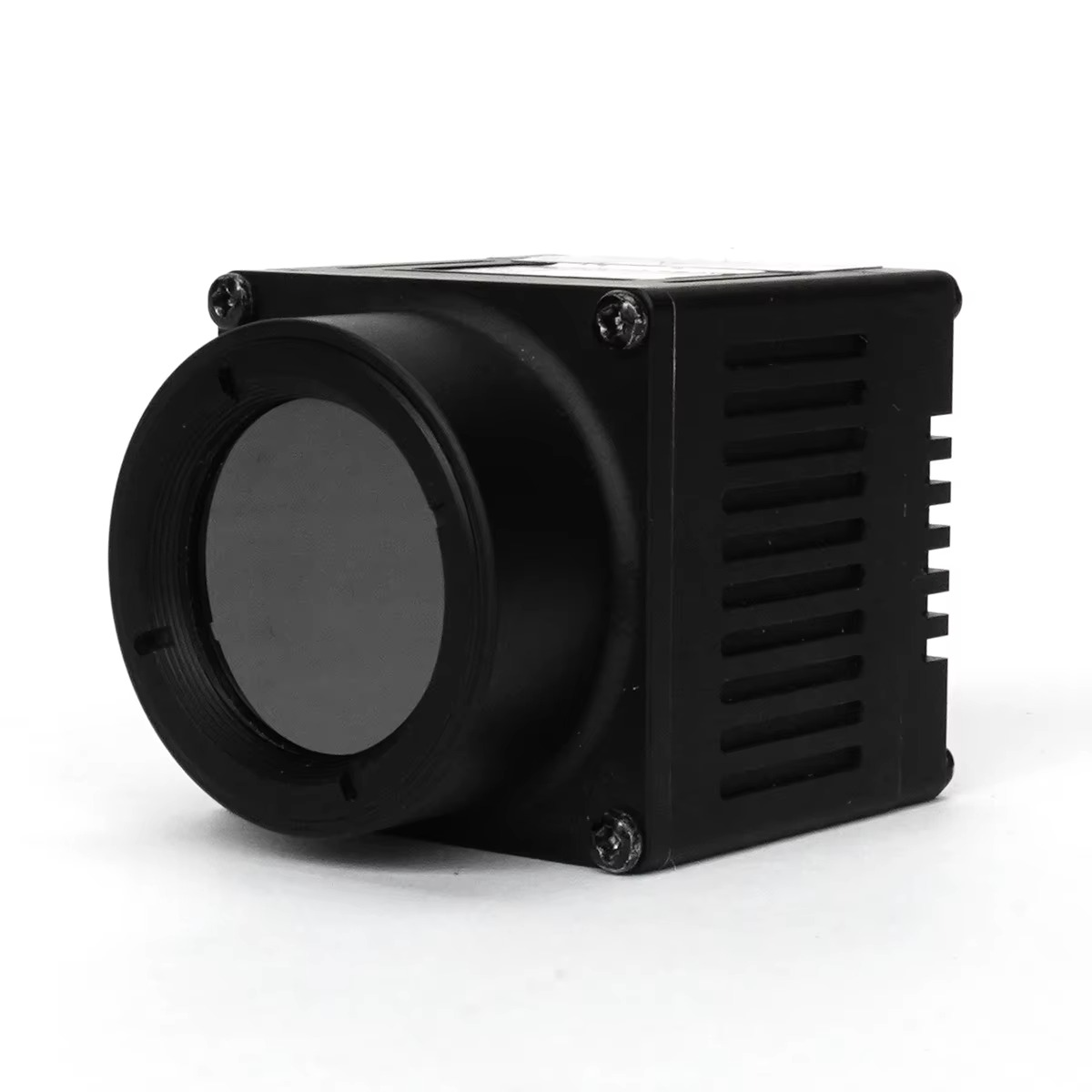
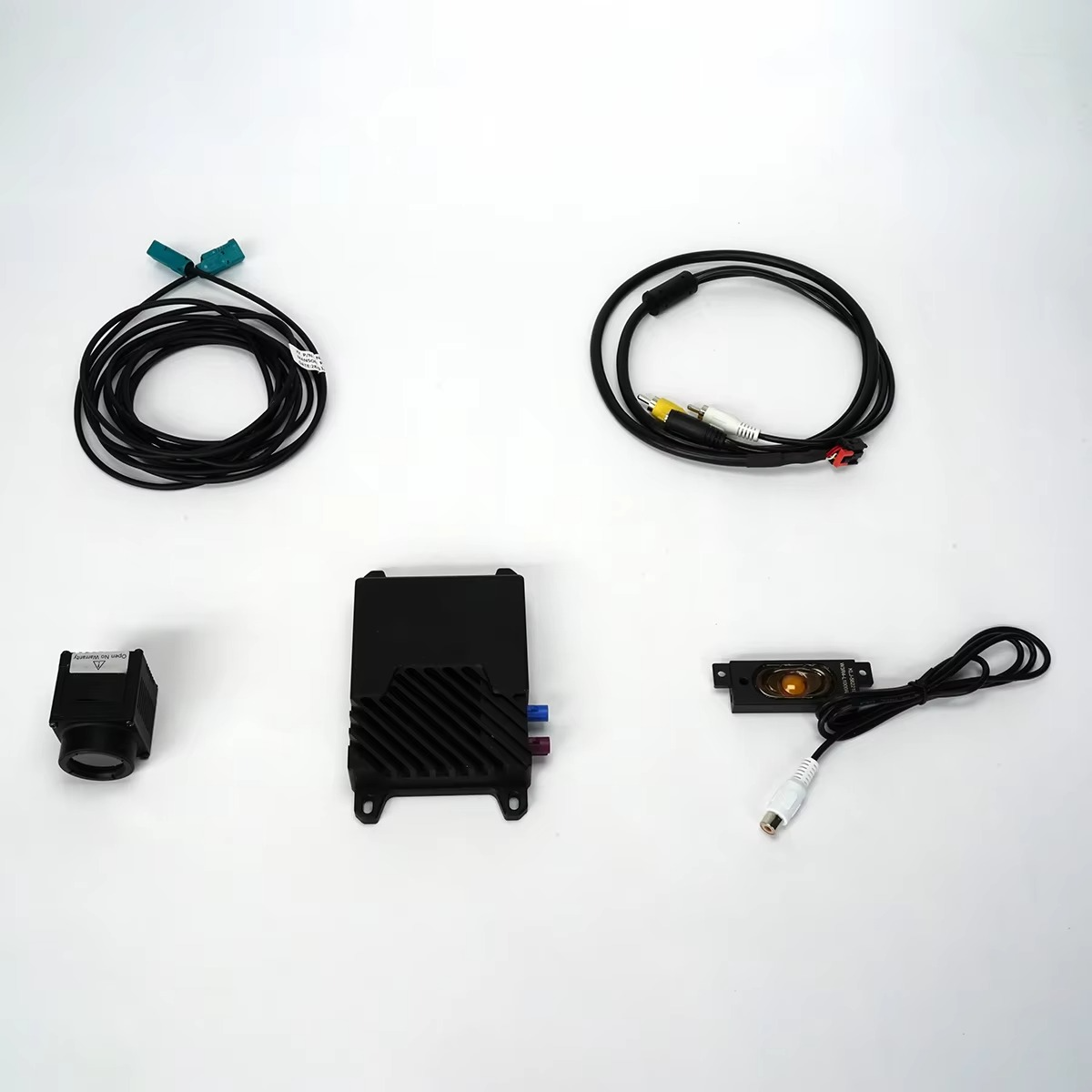
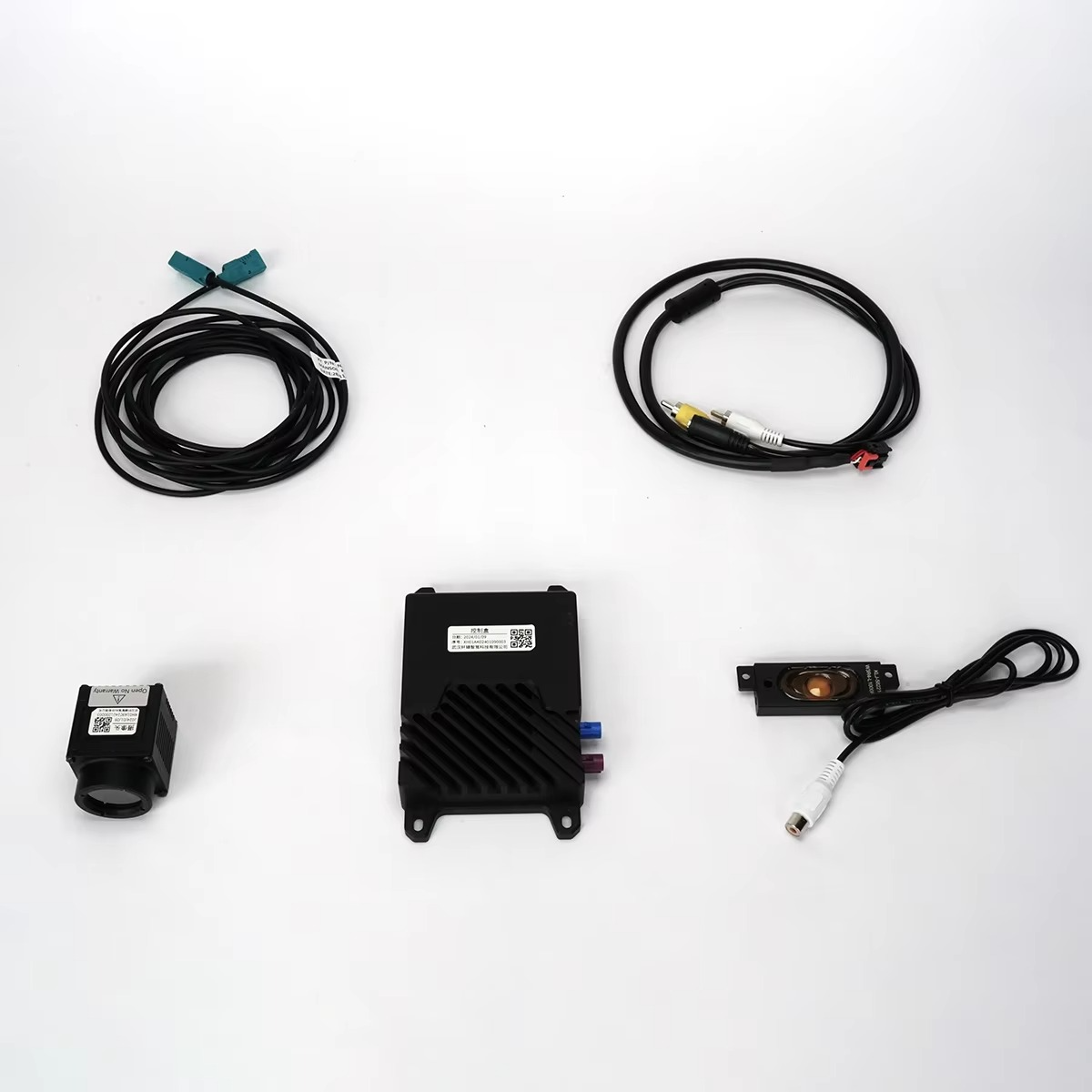
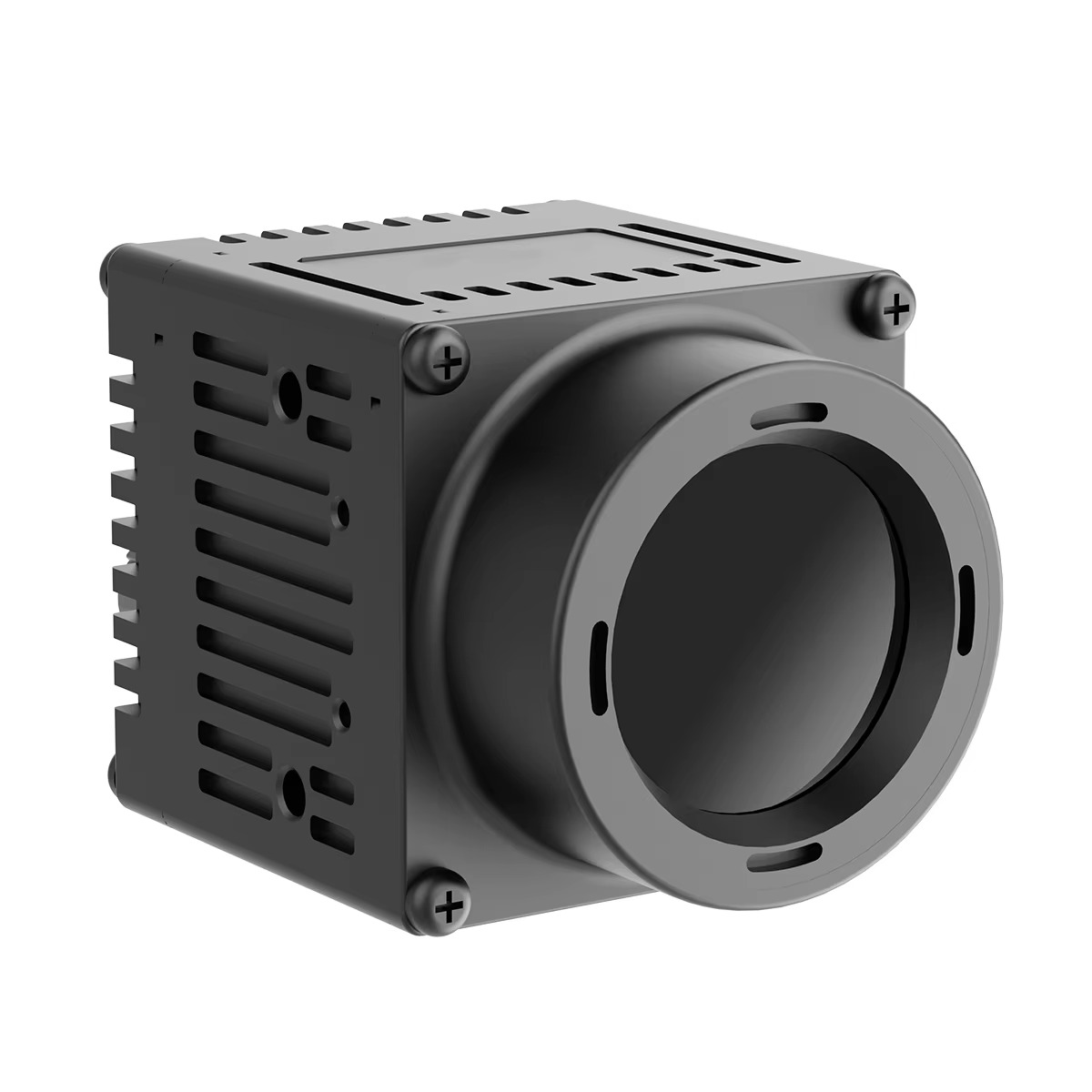
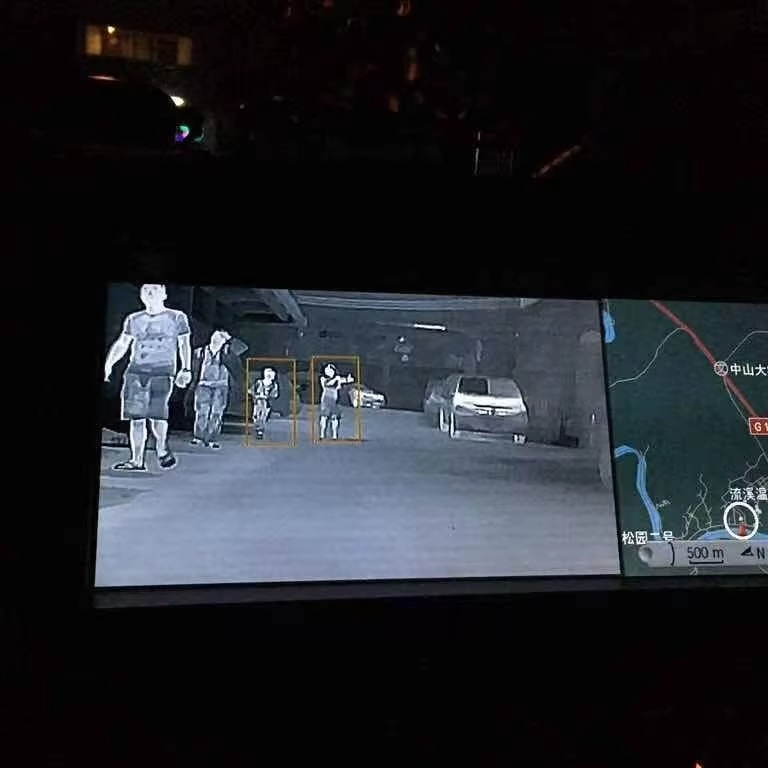
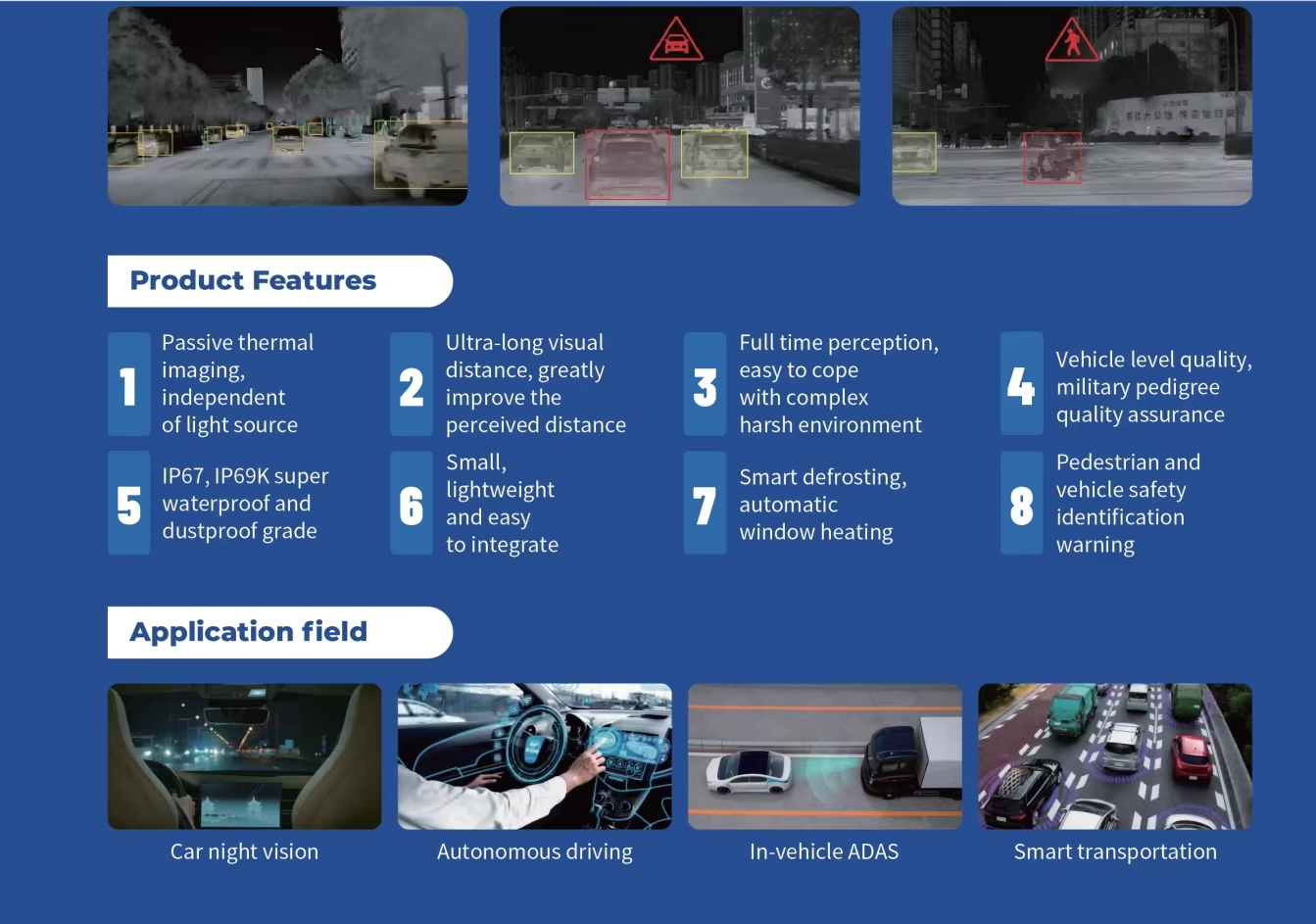

Infrared Thermal Camera Module ADAS System Vehicle Mounted Night Vision Camera 8-14um Infrared Intelligent Driving System
Approx $2,704.63 USD
🌡️ Infrared Thermal Camera Module – ADAS Vehicle Mounted Night Vision Camera
📝 Description
The Infrared Thermal Camera Module is a cutting-edge device designed for Advanced Driver Assistance Systems (ADAS), enhancing vehicle-mounted night vision and intelligent driving capabilities. Utilizing 8–14µm infrared technology, this module detects thermal radiation emitted by objects, pedestrians, animals, and vehicles, providing real-time nighttime visibility and hazard detection.
Designed for modern automotive and intelligent driving systems, this camera module plays a crucial role in enhancing safety, preventing accidents, and supporting autonomous driving features. It enables drivers and ADAS systems to perceive obstacles and road conditions in complete darkness, through fog, smoke, or adverse weather, where traditional optical cameras or human vision fail.
The module operates in the long-wave infrared (LWIR) spectrum, which allows it to detect heat signatures without relying on visible light. This ensures that pedestrians, animals, and vehicles are clearly visible, even under low-light conditions or complete darkness. By integrating this thermal camera into ADAS and intelligent driving platforms, vehicles can receive real-time alerts and automatic responses, improving road safety for drivers, passengers, and pedestrians alike.
The Infrared Thermal Camera Module is compact, rugged, and optimized for vehicle-mounted applications, capable of operating reliably under harsh environmental conditions such as vibrations, extreme temperatures, and moisture. Its high-resolution infrared sensor captures detailed thermal images, which can be processed by ADAS algorithms for collision warning, pedestrian detection, lane departure monitoring, and other intelligent driving functions.
With the increasing adoption of autonomous driving technology and smart vehicle systems, thermal imaging modules like this one are becoming essential for enhanced situational awareness and proactive safety measures. This module not only improves night driving but also contributes to vehicle intelligence, safer urban transportation, and reduced accident rates.
🔑 Key Points
- Infrared Spectrum: 8–14µm long-wave infrared for thermal detection.
- ADAS Compatibility: Integrates seamlessly with Advanced Driver Assistance Systems.
- Vehicle-Mounted Design: Rugged and durable for automotive applications.
- Night Vision Capability: Enhances visibility in complete darkness.
- Obstacle Detection: Identifies pedestrians, animals, and vehicles.
- Weather-Resistant: Operates effectively in fog, rain, smoke, and low-light conditions.
- High-Resolution Thermal Sensor: Provides detailed infrared imaging.
-
Intelligent Driving Integration: Supports collision warning, lane departure monitoring, and pedestrian detection.
- Compact and Lightweight: Easy integration into modern vehicles.
- Enhanced Safety: Improves situational awareness and reduces accident risk.
🌟 Benefits
1. Improved Nighttime Visibility
The camera module enables vehicles to see clearly in complete darkness, enhancing safety during night driving.
2. Pedestrian and Animal Detection
Detects heat signatures of humans and animals, reducing the risk of nighttime collisions.
3. Enhanced ADAS Functionality
Integrates with intelligent driving systems to provide real-time alerts and automated responses, improving road safety and driver awareness.
4. All-Weather Operation
Performs effectively under fog, smoke, rain, or other challenging conditions, providing reliable obstacle detection.
5. Long-Wave Infrared Technology
8–14µm spectrum ensures accurate thermal imaging, independent of visible light, which is critical for night vision systems.
6. Vehicle Safety Enhancement
Supports collision avoidance, lane departure warnings, and pedestrian alerts, contributing to safer urban and highway driving.
7. Compact and Durable
Lightweight, rugged, and vibration-resistant, the module is ideal for vehicle-mounted applications without compromising vehicle aesthetics or performance.
8. Integration with Smart Vehicles
Compatible with autonomous driving and intelligent systems, enabling enhanced situational awareness and proactive safety measures.
9. Real-Time Thermal Imaging
Provides instant detection of obstacles and heat sources, allowing drivers or ADAS systems to respond quickly.
10. Accident Prevention
Early detection of hidden obstacles, pedestrians, and vehicles reduces accident risk, protecting passengers, drivers, and other road users.
🤔 Why Choose This
The Infrared Thermal Camera Module is essential for modern intelligent driving and vehicle safety systems. Its 8–14µm long-wave infrared sensor ensures accurate detection of heat-emitting objects, making it ideal for night vision, collision avoidance, and pedestrian protection.
Compared to traditional cameras, this thermal module provides enhanced visibility in total darkness and adverse weather conditions, allowing ADAS systems to function reliably under all driving scenarios. Its vehicle-mounted rugged design and compact size make it easy to integrate into new or existing intelligent driving platforms.
By choosing this module, automotive manufacturers, engineers, and technology developers gain a reliable, high-performance solution for enhancing road safety, supporting autonomous driving features, and improving nighttime driving visibility.
✅ Conclusion
The Infrared Thermal Camera Module (8–14µm) is a vehicle-mounted night vision system designed for ADAS and intelligent driving applications. Its long-wave infrared sensor, high-resolution thermal imaging, and rugged vehicle-compatible design enable real-time detection of pedestrians, vehicles, and animals, even under low-light or adverse weather conditions.
Compact, durable, and easily integrated into intelligent driving platforms, this module enhances driver awareness, safety, and vehicle intelligence. It is an indispensable tool for autonomous driving, urban traffic safety, and nighttime road hazard prevention, ensuring safer roads and reduced accident risks.

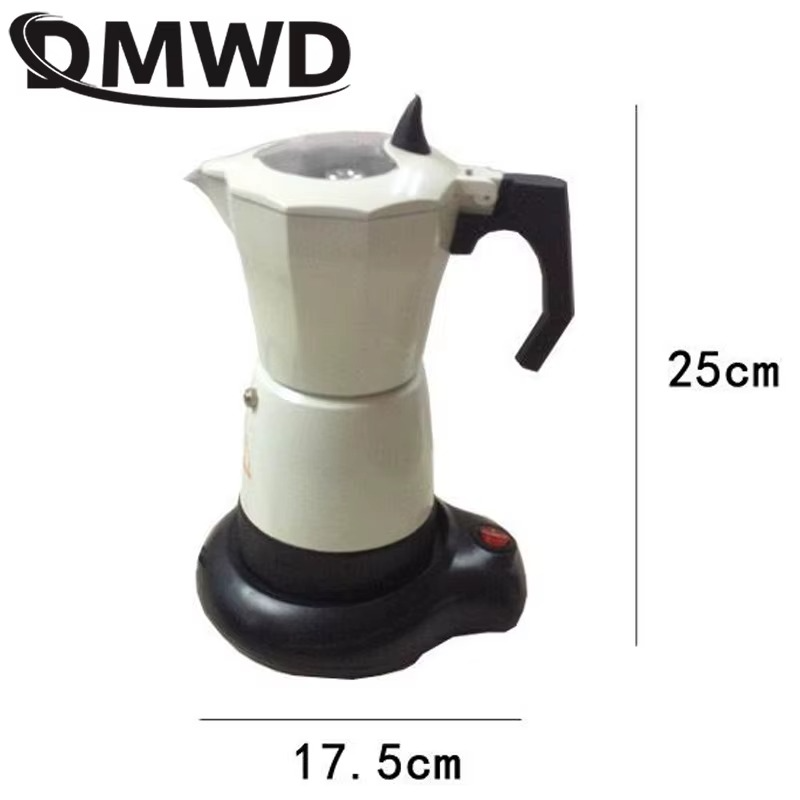





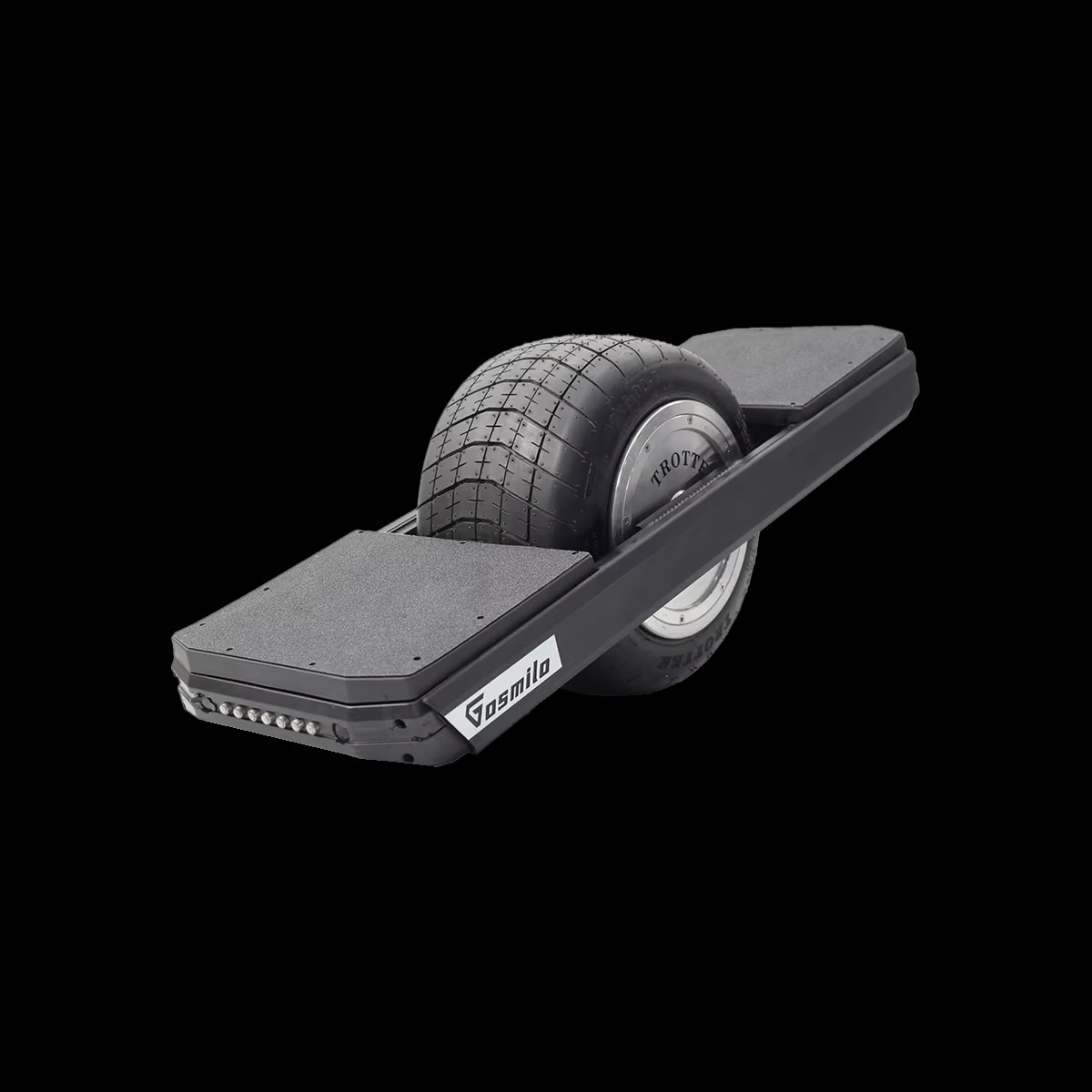
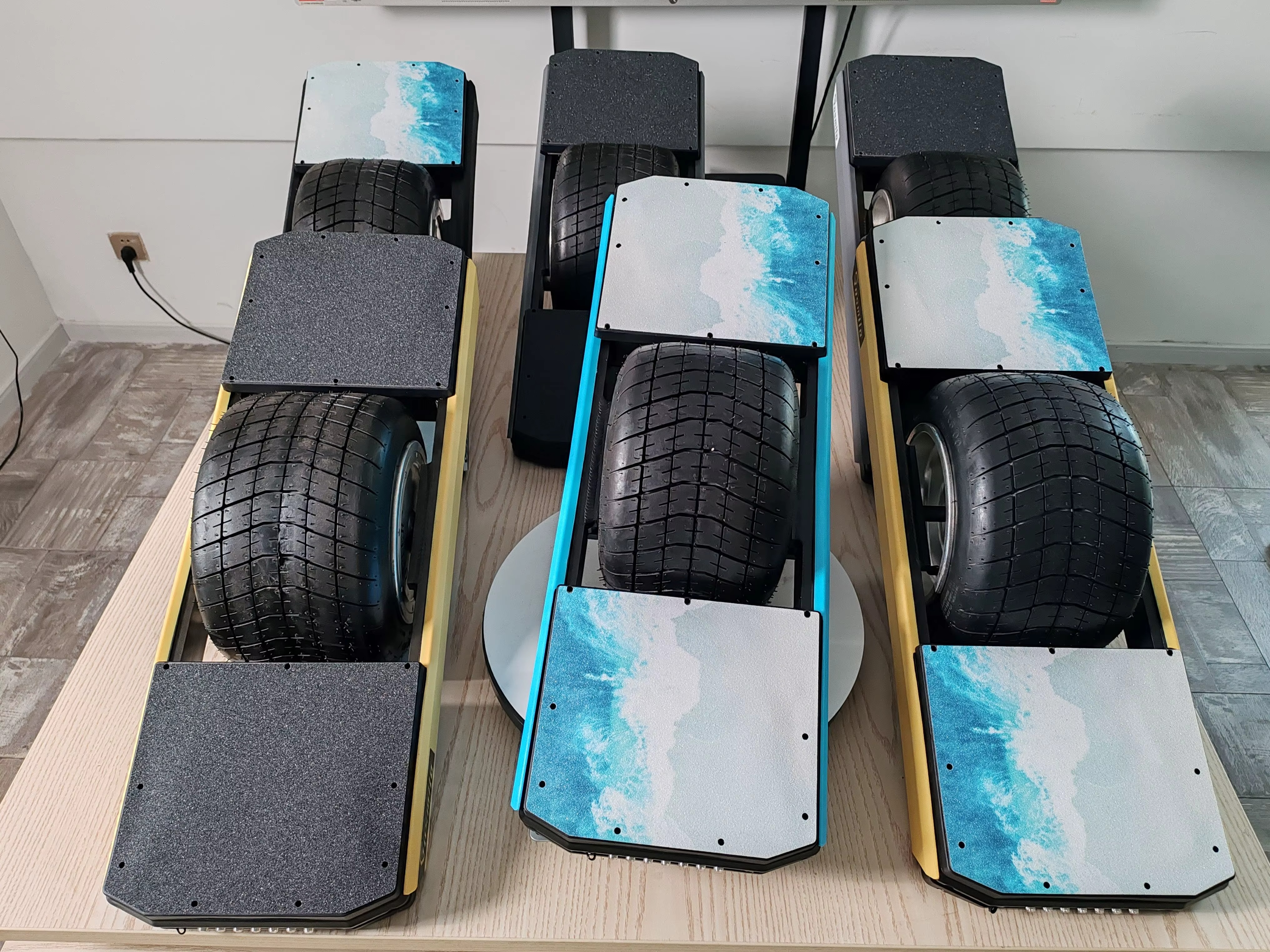

.png)





